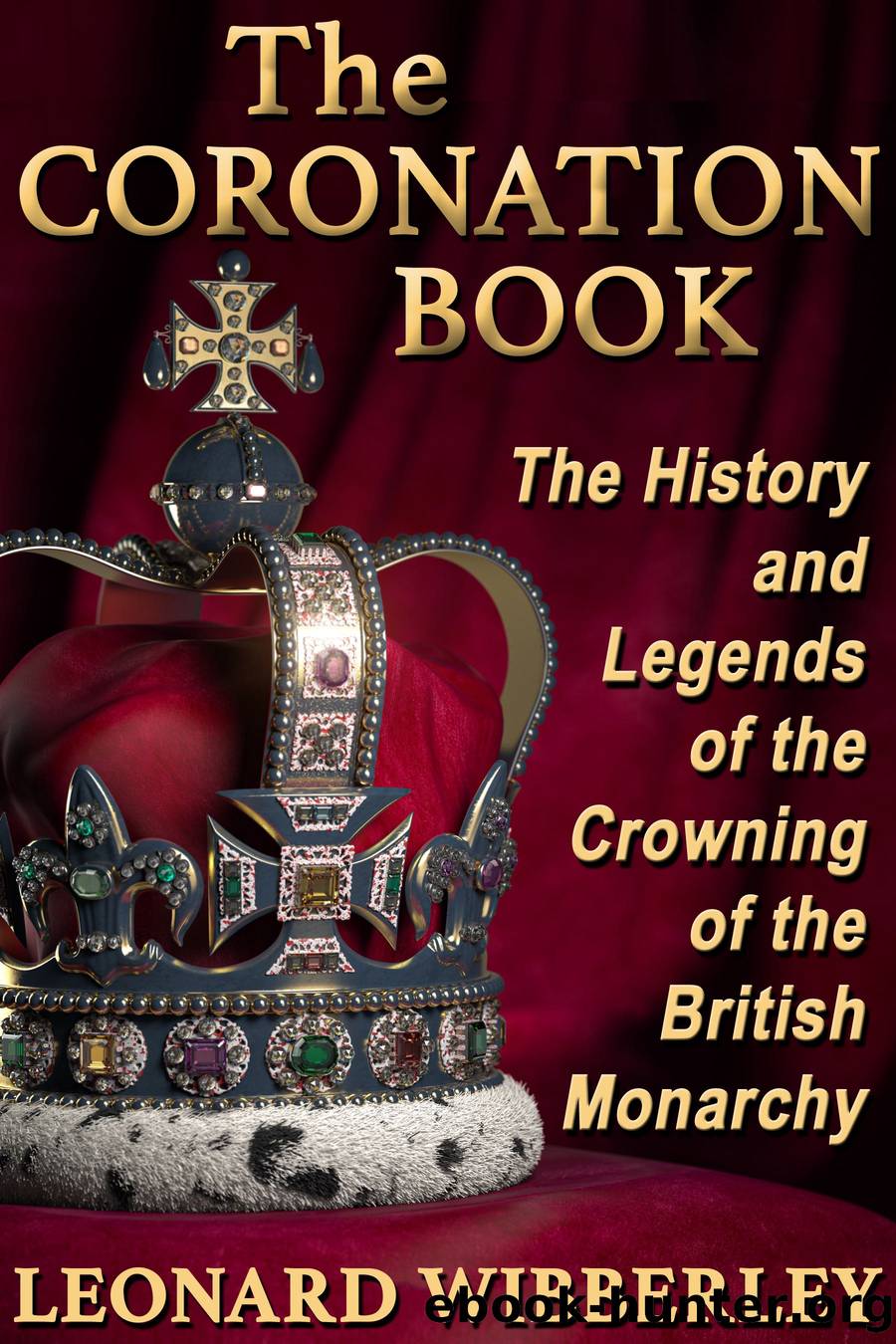The Coronation Book: The History and Legends of the Crowning of the British Monarchy by Leonard Wibberley

Author:Leonard Wibberley [Wibberley, Leonard]
Language: eng
Format: epub
Publisher: The Estate of Leonard Wibberley
CHAPTER XIII
The Royal Heralds
WITHIN the Kingdom of England there is a shadow realm, with three kings and ten nobles. It is a kingdom of which the British peoples become aware only at coronations or at the time of the death of their sovereign. Perhaps it would be better to say that this is a kingdom of reflection rather than of shadow. For it is composed of the Heralds of England, and heralds have no substance in themselves. They are merely images of the monarch. They do not, in their official capacities, speak for themselves nor live for themselves, but all their actions and words are those of the sovereign who is their master.
They have fine titles these Heralds, ringing of the days of armored knights and tournaments, of sorties from beleaguered cities and of passages-at-arms with lance or mace or battle-axe.
First, there is Garter Principal King-of-Arms, the chief of all the Heralds, who takes his name from one of the noblest of the orders of knighthoodâthe Order of the Garter. That order came into being in the time of Edward III who, according to the story, was dancing at a banquet with the Countess of Salisbury. The Countessâ garter slipped to the floor, bringing a few titters from the courtiers. The King picked it up and returned it to her, saying in rebuke to the sniggerers, âHoni soit qui mal y penseââNorman French for, âDisgraced be he who thinks ill of it.â From this incident originated, as a degree of knighthood, the Order of the Garter.
After Garter Principal King-of-Arms comes Norroy King-of-Arms, whose heraldic jurisdiction, laid down for hundreds of years, is north of the River Trent. And south of the River Trent, Clarenceux King-of-Arms holds sway.
These are the three kings of the mirror kingdom. They wear their own crownsâa circlet of gold with oak leaves around it. And when a new king-of-arms was appointed, he used, in olden days, to undergo a coronation of his own in imitation of his master. Wine was poured upon his head, he was invested with his tabard, or loose-sleeved coat, which is emblazoned with the badge of his office, and then the crown was placed upon his head.
Under the three Kings-of-Arms come the Heralds, who with the Pursuivants are the nobles of this kingdom within a kingdom. There are six English Heralds, each of whom takes his title from an historically important area in England. First, there is Windsor, then Chester, then Lancaster, York, Richmond and Somerset. Then come the Pursuivants, who are attendants upon the Heralds. These have the finest names of allâBluemantle, Rouge Croix, Rouge Dragon and Portcullis.
At the present time the duties of the Kings-of-Arms, Heralds, and Pursuivants have been largely reduced to reading to the people official proclamations concerning the monarchâsuch as the death of the king, the accession of a new king, the appointment of a Court of Claims to hear petitions of service at the coronation and so on. They also form the staff of an institution called the College of Heralds, which keeps the records of the titled families of Britain.
Download
This site does not store any files on its server. We only index and link to content provided by other sites. Please contact the content providers to delete copyright contents if any and email us, we'll remove relevant links or contents immediately.
| Military | Political |
| Presidents & Heads of State | Religious |
| Rich & Famous | Royalty |
| Social Activists |
Waking Up in Heaven: A True Story of Brokenness, Heaven, and Life Again by McVea Crystal & Tresniowski Alex(37489)
Empire of the Sikhs by Patwant Singh(22767)
We're Going to Need More Wine by Gabrielle Union(18633)
Hans Sturm: A Soldier's Odyssey on the Eastern Front by Gordon Williamson(18327)
Leonardo da Vinci by Walter Isaacson(12804)
The Radium Girls by Kate Moore(11621)
Tools of Titans by Timothy Ferriss(7815)
Educated by Tara Westover(7690)
How to Be a Bawse: A Guide to Conquering Life by Lilly Singh(7156)
Permanent Record by Edward Snowden(5541)
The Last Black Unicorn by Tiffany Haddish(5414)
The Rise and Fall of Senator Joe McCarthy by James Cross Giblin(5148)
Promise Me, Dad by Joe Biden(4908)
The Wind in My Hair by Masih Alinejad(4843)
The Crown by Robert Lacey(4572)
A Higher Loyalty: Truth, Lies, and Leadership by James Comey(4552)
The Iron Duke by The Iron Duke(4122)
Joan of Arc by Mary Gordon(3783)
Stalin by Stephen Kotkin(3724)
